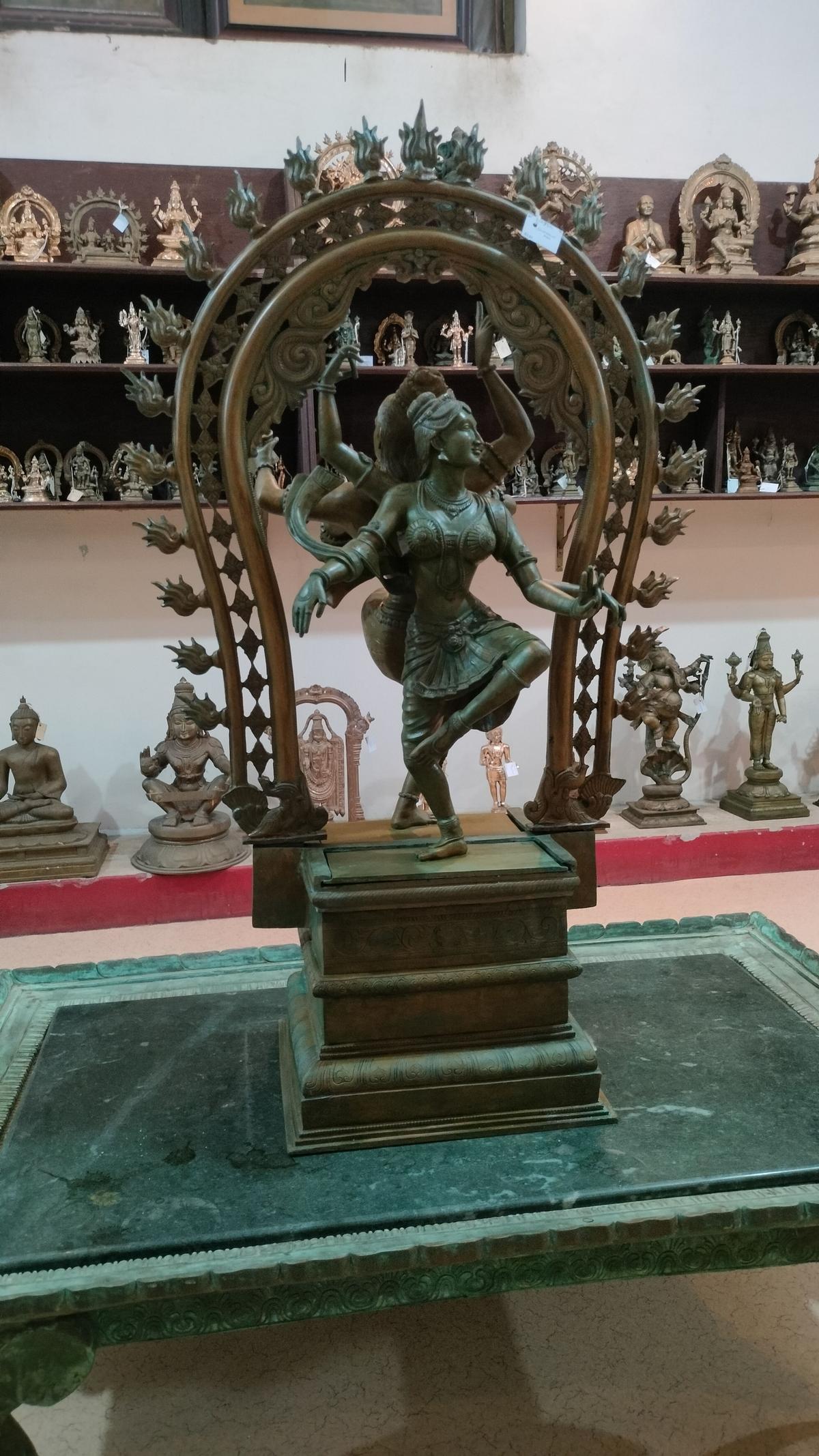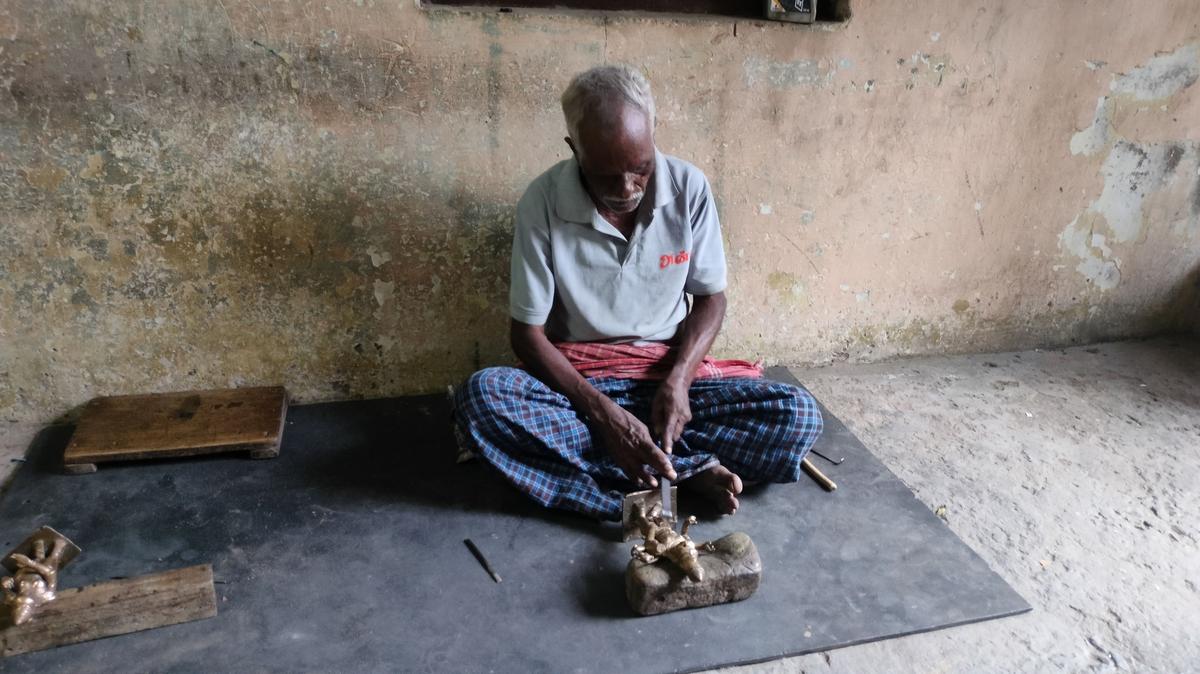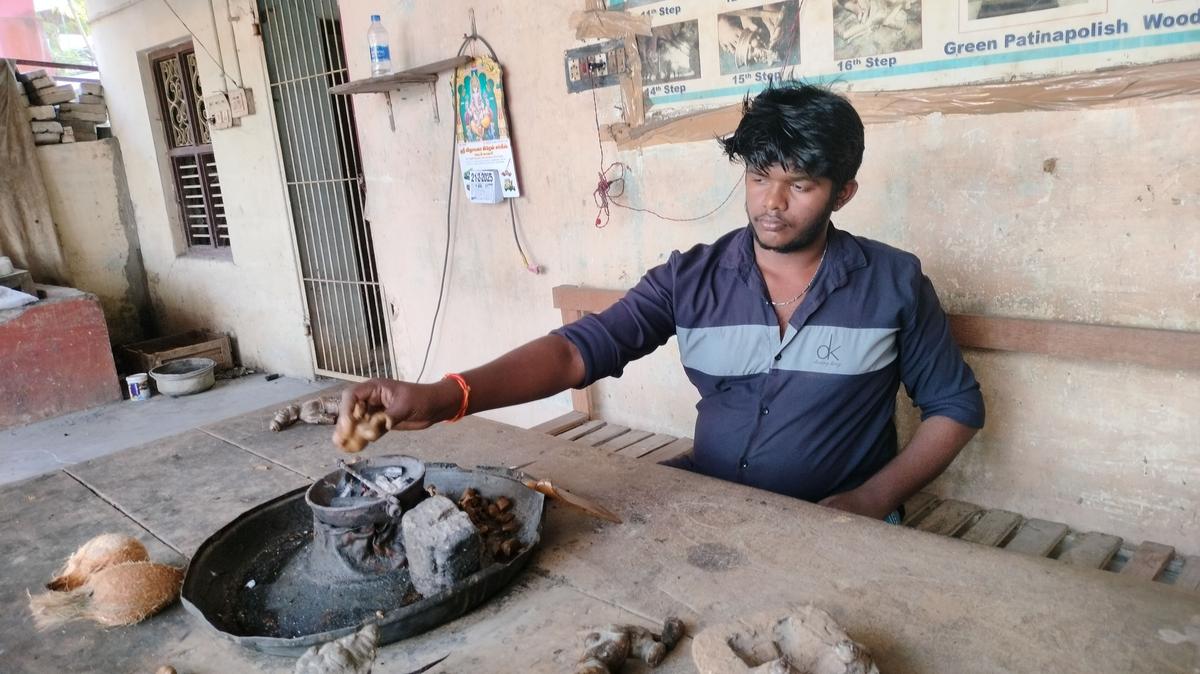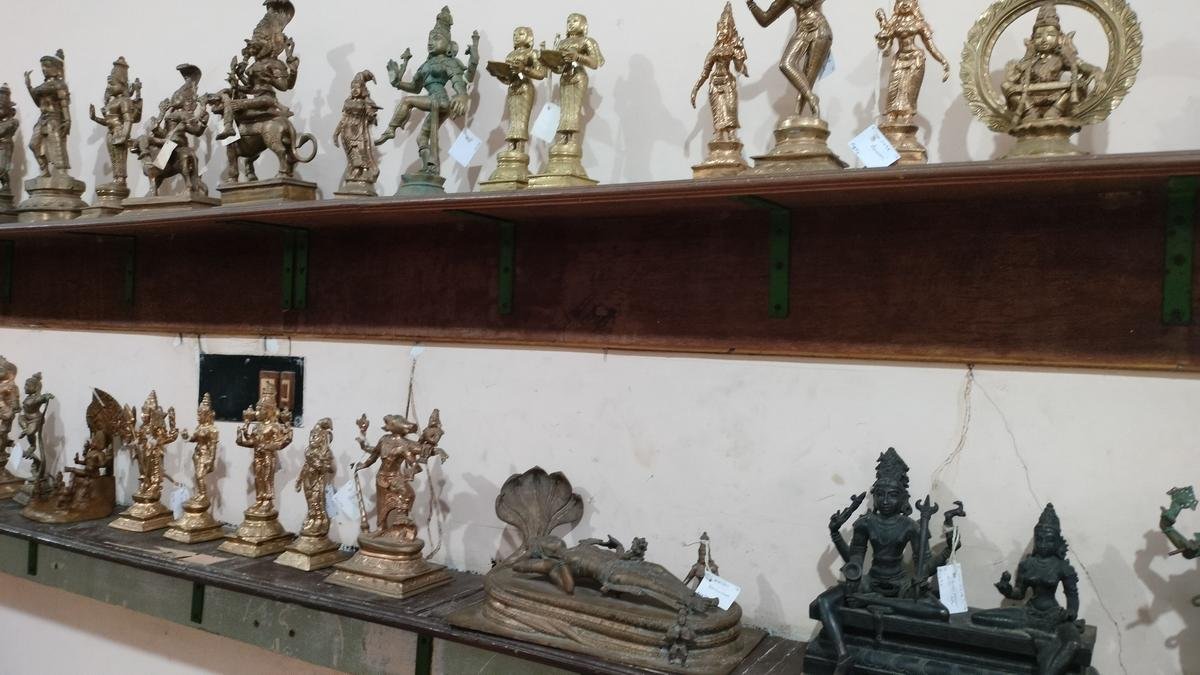Thirty-five km from Thanjavur, on the banks of a tributary of river Cauvery, is the town of Swamimalai. It is here that bronze sculpture making originated over 2,000 years ago, during the Chola reign. We walk into Shri Rajan Industries — makers of brass idols as per shilpa shastra — is also a bronze casting workshop and school. Your eyes are greeted with sculpted masterpieces and work-in-progress statues of Hindu deities.
Swamimalai is also said to be the only place in South India practising this craft, which originated in the seventh Century. It is said to have flourished under the patronage of “Sembiyan Mahadevi, wife of Gandaraditya Chola (949 CE to 957 CE),” says Suresh Kumar, manager of Shri Rajan Industries. The workshop and school were formerly managed by its founder — Suresh Rajan — a native of Kerala, who learnt bronze casting from the government-affiliated Art and Metal at Swamimalai at the age 24. “I was interested in sculpting since childhood,” says the now 71-year-old Rajan.

The idols are chiselled to perfection
| Photo Credit:
Special Arrangement
The Sthapathis (craftsmen), who belonged to the Viswakarma community, realised that the rich alluvial soil with high clay content on the banks of the Cauvery was ideal for making bronze sculptures and settled here. The craft would be passed on from one generation to the next. “The clay contains salt, which makes it ideal for idol-making. Currently there are 400 families in the village that practise this craft,” Rajan says, who then talks about the myth associated with this river bank. “It is here that Shiva’s son, Murugan or Karthikeyan, took on the role of a guru and explained the meaning of the ‘Om’ chant to his father,” shares Kumar, who goes on to explain the process of lost wax bronze casting.
“First, a clay on wax (a mixture of beeswax and resin) model is made, with an opening at the bottom. Melted metal — a mixture of 84 per cent copper, 14 per cent zinc and 2 per cent tin — is poured over the wax mould and set aside for a day for it to harden. This metal cast is then treated to heat, so that the melted wax flows out. After this, the hollow cast is filled with an alloy of copper, zinc and tin. A day or two later, the mould is broken and the idol or sculpture is chiselled, filed and polished,” he explains. Traditionally, panchaloha would also include silver and gold, but due to soaring prices, these metals are used sparingly. “Until a customer particularly requests it, we do not add these. Sometimes, visitors also donate their gold or silver jewellery for this,” says Rajan

Currently there are 400 families in the village that practise this craft
| Photo Credit:
Special Arrangement
Every statue/idol comes with a story. Fifty-two-year-old Arul Jyothi, chiseling away at a nearly-complete idol of Parvathi explains: “In this form, she is Bhoga Shakti. The goddess here is relaxed and this is the position she assumes before going to the inner sanctum of her husband, Shiva,” says Arul, who has been a sculptor for 40 years.
Praveen, aged 23, who has been with the school for seven years, demonstrates how he shapes the malleable wax into a meditative mudra over a portable furnace. “During the Chola period, the bronze cast idols were used for processions and were called urchava or utsava murtis. These were taken from the temple to the streets on a chariot, often decorated with flowers, jewellery and silks, while people thronged the streets to seek blessings during the procession,” Rajan adds.

Praveen has been with the school for seven years (can we check if that is the boy in the pic )
| Photo Credit:
Special Arrangement
Detailing is key when it comes to wax bronze casting. “We artists can see the delicate folds of a garment on the idols, shape of the eyes, mudras and jewellery — all coming to life on the idols. Each idol or statue is unique, as we make only one from each mould,” says Kumar.
When the pandemic hit, artists sought other jobs and the vocation lost skilled craftpersons. Kumar believes that the craft is a fusion of spirituality and science, and a panchaloha idol is a harbinger of positive vibes. While an artist can be paid anywhere between ₹300 to ₹2,000 per day, the craft is dying.
According to Rajan, few people have been coming to learn the GI-tagged craft. “Indians do not appreciate it, but Westerners do. So do NRIs or VVIPs. The local consumer is still on the lookout for a mass-produced brass idol, which probably, ends up as a showpiece,” he says.
Published – July 19, 2025 12:48 pm IST
